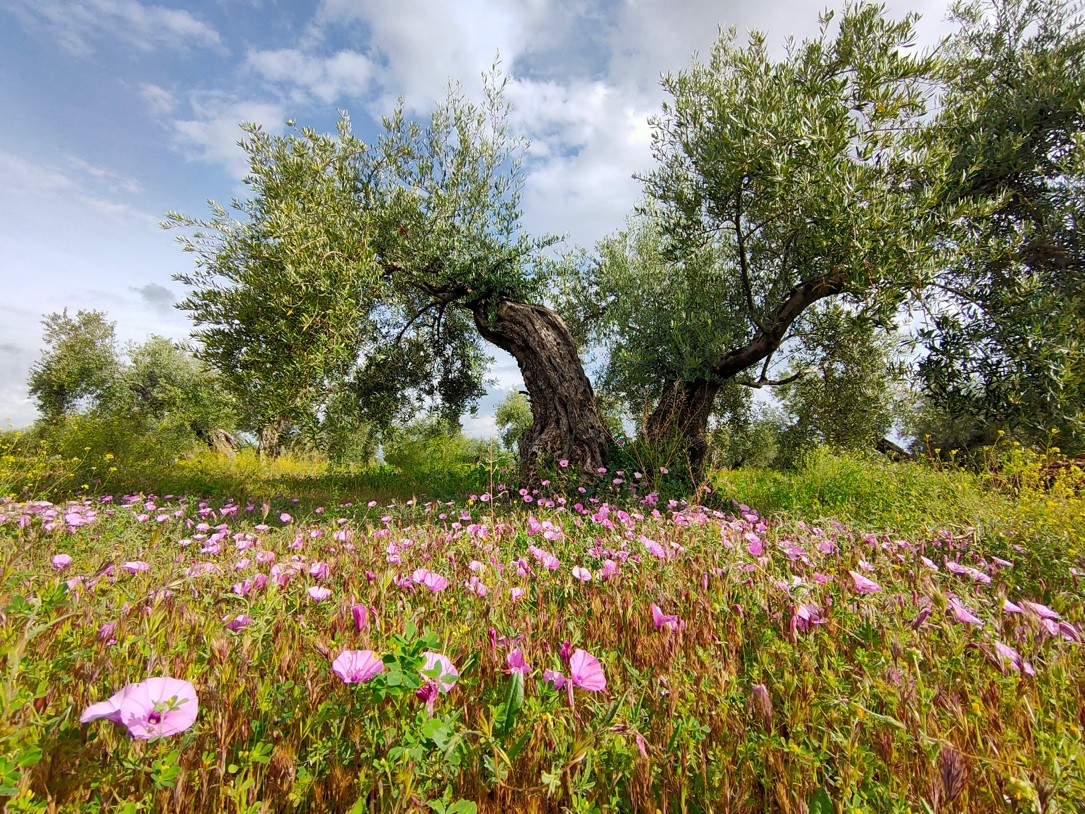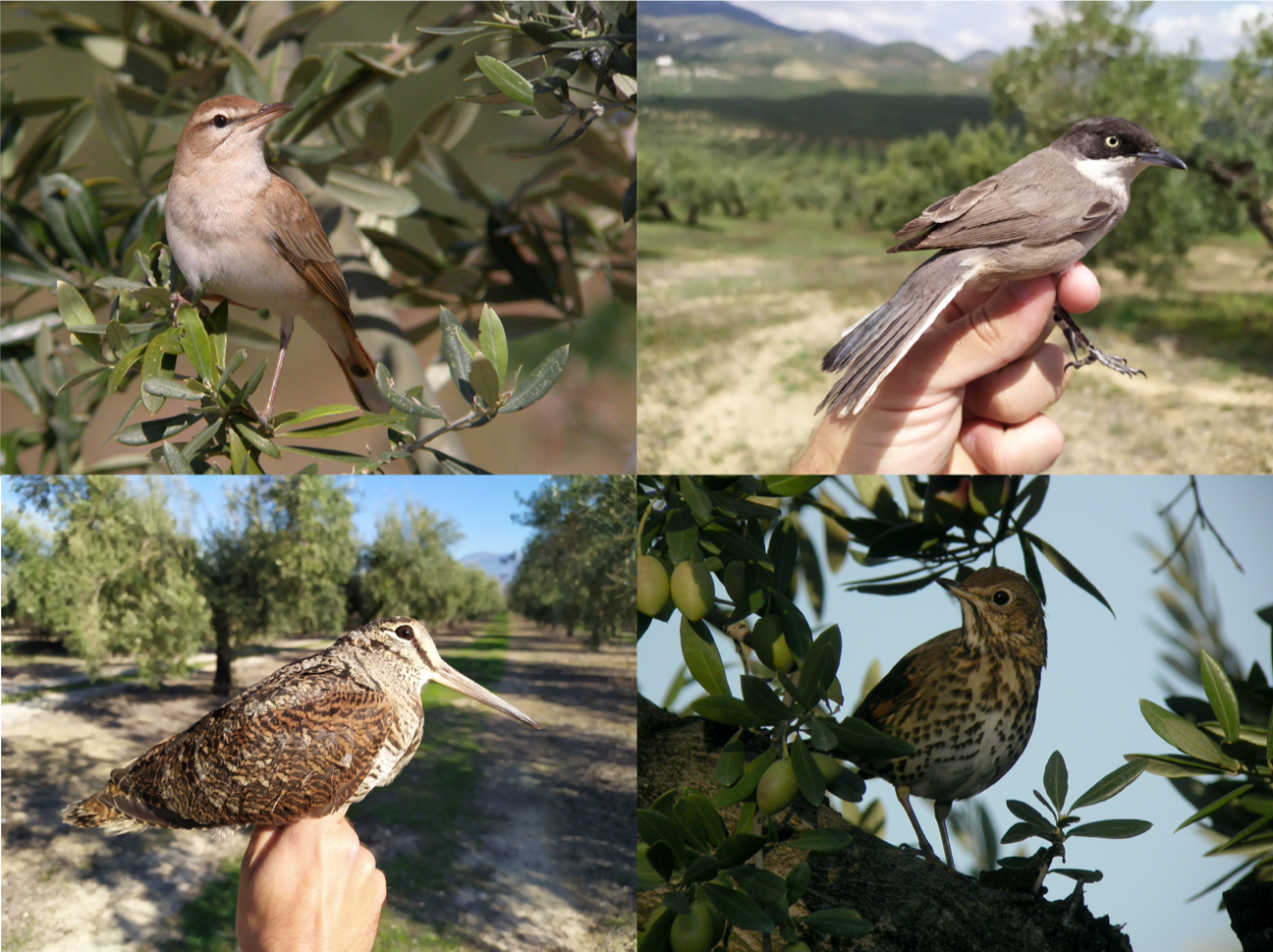Greater plant diversity in olive groves has positive impacts on birds
Los resultados muestran que las aumentan y son más diversas ante niveles más bajos de intensificación agrícola.

European roller perched on an olive tree. Photography: M. Gómez @manuelgomezwildlife
. Greater diversity of herbaceous and woody plants in olive groves can enhance bird abundance and diversity — without compromising crop yields. This is the main conclusion of a new study led by the Doñana Biological Station – CSIC and the University of Jaén, which identifies critical ecological thresholds to promote biodiversity in this traditional crop without compromising profitability. The findings have been published in the journal Ecological Applications.
The study begins with a well-known Mediterranean reality: olive groves are one of the most iconic agricultural landscapes, but also among the most heavily transformed in recent decades. This ancient crop has undergone major changes due to agricultural intensification, leading to increasingly extensive groves with less herbaceous cover and a less natural surrounding environment. In response, this new research explores how olive farming can balance production goals
Specifically, the researchers analyzed how bird communities respond along a gradient of agricultural intensification in olive groves in southern Spain. The study was conducted across 50 farms, from intensively managed estates to those maintaining natural herbaceous cover. The sites ranged from monoculture olive landscapes to areas with significant natural habitat presence. The researchers examined a set of environmental variables indicating the degree of agricultural intensification at different spatial scales — such as ant abundance, olive tree density, herbaceous and woody plant diversity, and the proportion of surrounding natural habitat. Using this data, the researchers aimed to identify critical thresholds in these variables—points at which bird abundance and diversity simultaneously increase or decline.

The results showed that birds responded positively to lower levels of intensification. As vegetation cover and plant diversity — both herbaceous and woody — increased, so did bird abundance and diversity. “This positive response wasn’t limited to specific bird groups; species with very different diets and foraging strategies showed similar patterns,” explains Vicente García-Navas, researcher at the Doñana Biological Station and lead author of the paper.
According to the researchers, bird abundance didn’t change abruptly with shifts in environmental variables, but rather progressively, with a high level of synchrony among species. This suggests the existence of critical ecological thresholds. Specifically, the study estimates that reaching a minimum threshold of 85 herbaceous plants and 15 woody plants per farm can significantly enhance biodiversity in olive groves with virtually no negative effects.
Identifying and establishing ecological thresholds based on community-level data in human-modified ecosystems is essential for designing effective conservation measures. These thresholds help pinpoint where certain species begin to increase or decline more sharply, and thus guide trade-offs between production and biodiversity conservation.

“There’s no magic formula, but these figures can help guide future management decisions. In this regard, setting clear targets for maintaining a minimum number of plant species under the EU’s Common Agricultural Policy could greatly enhance its impact on preserving biodiversity,” concludes Pedro J. Rey, professor at the University of Jaén.
The study also highlights that these positive effects occur at multiple scales—both at the farm and landscape level. Therefore, actions aimed at conserving biodiversity in this woody crop should not be limited to the productive areas, but also consider the surrounding environment and landscape as much as possible.
This research was carried out under the framework of the LIFE projects “Olivares Vivos” and “Olivares Vivos+”, which aim to increase olive grove profitability through biodiversity recovery.
Reference
García-Navas, V., Tarifa, R., Salido, T., González-Robles, A., López-Orta, A., Valera, F. & Rey, P.J. (2025) Threshold responses of birds to agricultural intensification in Mediterranean olive groves. Ecological Applications, 35: https://doi.org/10.1002/eap.70057